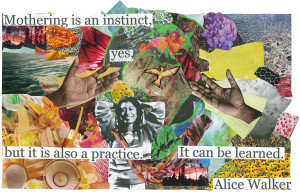When discussing the literary identities as “Black Bohemian Feminists” honed by Ntozake Shange and Alison Mills, Harryette Mullen alludes to the poetry of the Beat Generation — a literary staple of 1950’s and 1960’s bohemia. Mullen’s analysis of Sassafrass, Cypress & Indigo in part revolves around defining the black woman relative to the man, characterized by allegiance to the family and serving as “passionate lovers of black men” (205). This comment allowed me to interrogate, not just the well-known poets of the Beat Generation, but their families and lovers as well. A central name in among the Beats was William S Burroughs. A less central name is Joan Vollmer, his wife who he ‘accidentally’ murdered one night in Mexico. Unlike Shange and Mills, Vollmer is recognized as one of the few female voices of the Beat Generation. In this regard, focusing on the lovers of the great figures of the Beat Generation sheds light on the apparent disposability of the female voice and female body. While Shange was falsely criticized for negatively depicting black men through her work, the murder of of Joan Vollmer is scarcely discussed and hardly tarnished Burroughs’ pristine literary reputation.
Sassafrass, Cypress & Indigo concludes with the powerful image of Sassafrass giving birth to a “free child” after she has freed herself from Mitch after suffering from his abuse. This freedom is not just from the male literary gaze, but from systemic violence of any sort targeting the black female body and voice. Mullen mentions that Shange chose art over family in contrast to the bourgeois feminist “who wants to have it all,” but I challenge this with the notion that Sassafrass, Cypress & Indigo alongside Daughter’s Geography conveys the bohemian rawness of the Beats through the lens of a mother, sister, lover, and poet. Shange’s art instead honors her family just as authentically as Allen Ginsberg does in Kaddish. Shange’s black bohemian rawness does indeed deserve to be captured and praised poetically alongside Ginsberg and Kerouac, two key figures of the Beat Generation who met at Columbia just over ten years before Shange enrolled at Barnard. While Allen Ginsberg and Kerouac write of mothers and lovers respectively, one is forced to question why the female lover, particularly within a familial context, must be seen only as the subject. When will black women have an equal platform to tell their own stories of motherhood and womanhood? Perhaps this discrepancy explains why there are no black female voices of the Beat generation and why the glorified bohemian literary life of the Beats left Joan Vollmer writing from her grave.


 For the past few weeks, I have been thinking about the concept of being a daughter and how that is a motif in Shange’s work. My understanding of the saliency of (what I call) “daughtership” was further developed through my reading of Sassafrass, Cyprus and Indigo and during the Africana Department event “Who’s Going to Sing A Black Girl’s Song?” A Conversation on Black Girlhood with distinguished Africana alumnae Asali Solomon ‘95 and Alexis Pauline Gumbs ‘04.
For the past few weeks, I have been thinking about the concept of being a daughter and how that is a motif in Shange’s work. My understanding of the saliency of (what I call) “daughtership” was further developed through my reading of Sassafrass, Cyprus and Indigo and during the Africana Department event “Who’s Going to Sing A Black Girl’s Song?” A Conversation on Black Girlhood with distinguished Africana alumnae Asali Solomon ‘95 and Alexis Pauline Gumbs ‘04.